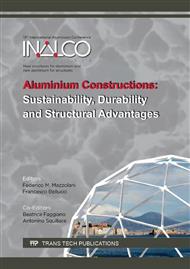p.288
p.295
p.303
p.309
p.315
p.321
p.327
p.333
p.339
Materials Performance and Design Analysis of Suspension Lower-Arm Fabricated from Al-Si-Mg Castings
Abstract:
The diversity of physical and mechanical properties of aluminum alloys leads to develop a variety of manufacturing processes including the semi-solid casting process. Fatigue failure is considered the most common problem occurred in automotive engineering applications by which the vehicle components, mainly suspension system parts, fail under conditions of dynamic loading. It is well known that the fatigue life of aluminum castings, mainly A357, is very sensitive to casting design as well as to casting defects and microstructure constituents. The fatigue characteristics of automotive lower suspension arm made of semi-solid A357 aluminum castings have been investigated using metallurgical and analytical approaches. The critical stress areas capable of initiating cracks during fatigue tests are detected by using fatigue experimental design for real part materials by the installation of strain gages on the suspension arm to calculate maximum stress; further more, analytical approach is applied using modelling software. Microstructure characteristics of the semisolid A357 under T6 heat treatment conditions are examined using scanning electron microscope. The results show that using the SEED casting technology (Swirled Enthalpy Equilibration Device) has an efficient effect on the mechanical and metallurgical characteristics of real part materials that are also affected by castings design.
Info:
Periodical:
Pages:
315-320
Citation:
Online since:
September 2016
Authors:
Keywords:
Price:
Сopyright:
© 2016 Trans Tech Publications Ltd. All Rights Reserved
Share:
Citation:


